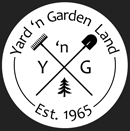Planting New Lawns, Maintenance & Care
All About Lawns
If you’ve ever wondered what it takes to have a beautiful lawn, look no further. Our experts have put together advice to help you learn to grow a new lawn, improve your current lawn, and maintain it with proper care.
LINKS
Planting New Lawns from Seed
Installing Sod
Overseeding
Dethatching
Aeration
Lawn Care Products

~ Planting New Lawns From Seed ~
The best time to plant lawn seed is when daytime temperatures are between 60 – 70 degrees. Grass seed needs mildly warm temperatures to germinate successfully.
~ Installing Sod ~
Sod can be installed almost any time of the year. However, the best times are early to mid-fall and spring when temperatures are cool but grass is growing.
Sod is available to order.
For details please call us at 360-573-7172.
~ Overseeding ~
Overseed your lawn when there are bare spots or patchy areas. These spots can appear from too much foot traffic or heat.
~ Dethatching ~
Dethatching removes the layer of dead grass and roots between your healthy, green lawn and the soil. It is important to dethatch so air, water, nutrients, and fertilizer can reach the soil more efficiently. Dethatch when the thatch layer is more than ½ an inch thick. A thatch layer ½ inch or less can be beneficial, insulating the soil from sunlight and reducing evaporation. Dethatching should be done in spring or early fall when temperatures are cooler. Avoid dethatching in hot temperatures, drought or very cold temperatures.
~ Aeration ~
Aeration allows oxygen, fertilizer, nutrients and water to reach the lawn roots. It also loosens compacted soil, breaks up thatch and prevents thatch build-up. Aeration is ideal in areas with clay soil, where water pools after rain, high traffic areas, patchy or bare areas, areas where thatch is more than ½ inch thick. The best time to aerate is in spring and fall when the temperatures are mild. Clay soil should be aerated annually. Aerate prior to fertilizing. Do not aerate in drought or high heat. Do not aerate new lawns for at least one year.
~ Lawn Care Supplies ~
Keeping your lawn lush, green and healthy is easy with our selection of lawn care products. We carry both conventional and organic options. Below are some of our top sellers.
Wil-Gro Fertilizers
We supply a line of fertilizers by Wil-Gro that will nurture your lawn throughout the year. Each product is applied at specific times of the year for best results.
Barenbrug Grass Seed
We carry Barenbrug grass seed. It is of the highest quality and the seed originates in Oregon with no noxious weed seeds. We offer it in bags of 2LB, 5LB, 10LB, 25LB and 50LB. For new lawns use 6-8 LB per 1000 square feet. For filling bare areas, use 3-4 LB per 1000 square feet.
Weed, Moss & Pest Control
To maintain your beautiful lawn you will find helpful products to get rid of weeds, moss and insects.
Some of our most popular options include:
Weed Whacker – A selective spot spray, kills broad leaf weeds but not your grass.
Hi-Yield Grub Free Zone – Kills grubs invading your lawn. For prevention, apply in April.
Hi-Yield Weed & Grass Stopper – Attacks crabgrass and broadleaf weeds. Safe on your lawn. For prevention, apply in April.
Moss Out – Great moss control. Best time to apply is April.
Pulverize Weed Killer For Lawns – An organic option. Selective weed killer on broadleaf weeds.
YARD ‘N GARDEN LAND
1501 NE 102nd Street
Vancouver, WA 98686
360.573.7172
FALL/WINTER STORE HOURS
Monday – Saturday: 8:00am – 5:00pm
Sunday: 9:00am – 5:00pm
HOLIDAY HOURS
Memorial Day: Close at 4pm
July 4th: CLOSED
Labor Day: Close at 4pm
Thanksgiving Day: CLOSED
Christmas Eve: Close at 2pm
Christmas Day: CLOSED
December 26th: CLOSED
New Year’s Eve: CLOSED
New Year’s Day: CLOSED
